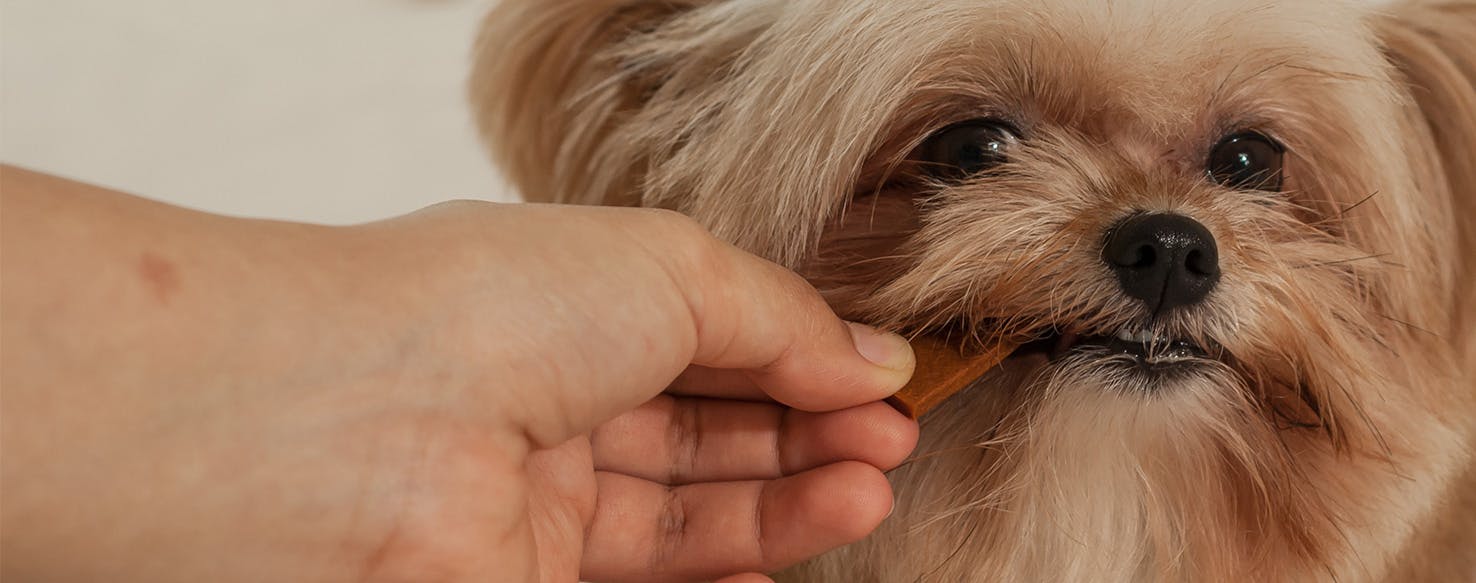- Home
- The Daily Wag!
- Behavior
- Why Dogs Don't Like Dry Food

Common
Irregular
Many dog owners know the experience of having a four-footed appetite as a member of the family. Dogs can certainly seem like bottomless pits; snatching up a morsel of food their human accidentally dropped while preparing dinner, catching a treat on the fly, becoming a canine vacuum cleaner when anything from dry dog food to Cheerios gets dropped on the kitchen floor or even trying out a piece of broccoli surreptitiously slipped to them under the table by Junior. But what about the opposite, as strange as it might seem? Can such things be? What about a dog that doesn’t want to eat dry dog food?
Dry dog food, often called ‘kibble,’ is a perfectly acceptable diet for a dog. Dry food is less prone to spoilage than canned, cooked or raw food, is more shelf-stable (lasts longer in storage) and is more energy-dense than other types of dog food. Dry dog food is often also nutritionally balanced for certain conditions, sensitivities and age groups, such as puppy or elder kibble, weight loss formulas, sensitive tummy recipes and even joint-support kibbles for arthritic dogs. Kibble also tends to be less costly than other types of dog food. With all that said, kibble does have some drawbacks. Dry dog food often contains more grains -- much more -- than other varieties of dog food. In addition, kibble frequently contains preservatives. On the other hand, canned or 'wet' dog food tends to have a higher proportion of meat and protein as well as a higher fat content, all of which makes it more tasty to dogs. So the first things to consider are the circumstances leading your dog to refuse kibble. Did he previously eat kibble, and then stop? Is he eating anything else? Or is he refusing all food? A dog that refuses all food could be suffering from some sort of medical issue, in which case a visit to the vet would be suggested. However, a dog that eats some food while avoiding kibble could have any one of several different reasons for doing so; reasons could range from dental or digestive troubles to simple choosiness. You'll need to rely on your own observations of the dog's recent behavior to draw conclusions. It is important, while studying the matter, to strictly control a finicky dog's food intake and opportunities. Don't feed your dog treats or offer him human food scraps. Stick to the regular food and the regular schedule so you can get a handle on what and when your dog is eating, if at all. You'll need to share that detailed information with your veterinarian, should it come to a vet visit.
Need advice about your pet's health?
Get answers fast from a veterinary professional 24/7 in the Wag! App.
Get Vet ChatIf your visit to the vet doesn't turn up a medical reason for your dog's finicky eating habits, there are ways to encourage your dog to dig in to a dish of kibble. Moving to a different brand or formulation of dry food may be all it takes. If you unintentionally picked up a bad or spoiled bag of dry food at the store, your dog may be trying to tell you that by not eating what you're offering. If you're feeding a cheaper brand of dry that is mostly composed of grains, try switching to a premium brand that has more protein. Perhaps your dog would be happier with dry food that has meat as its primary ingredient. You can also jazz up your dog's meal with additions or mix-ins that make dry food more appealing. Adding a single spoonful of good-quality wet food or peanut butter to a dog's kibble as a canine appetizer can be all it takes to get a dog to eat hearty. Adding warm water to dry food, briefly heating kibble in a microwave or adding a splash of bone broth can enhance the food's aroma, making it more enticing to your dog. Some pet food producers also make wet mix-ins that are intended to be added to kibble. Consider taking your dog for a short or moderately long walk before mealtimes. Physical activity can increase appetite, and perhaps consider reducing or eliminating distractions in the spot where you feed your dog. Finally, don't react negatively when your dog doesn't eat, as that negative reinforcement can cause some dogs to repeat the behavior that gets attention. Give your dog attention and reinforcement when he eats, not when he doesn't eat.
Also bear in mind the possibility of dehydration. If your dog is refusing kibble but is drinking excessively, it could be due to dehydration -- and not due to the kibble at all. Increase your dog's access to fresh, clean water and use fresh, clean dishes as much as possible. If your dog has only one water dish, then provide a second one in a place where your dog will readily find it. If your dog already has two water dishes, consider providing a third. Also, wash or change the dishes more frequently and fill them more often. In short, provide plenty of fresh water and clean dishes for your dog; if dehydration is the culprit, more access to water could be the simple solution.
There are many reasons why a dog might turn his nose up at kibble. And so long as there isn't a medical reason behind the refusal, there are many simple and relatively inexpensive solutions. Check in with your vet to eliminate potential medical issues, and then with his or her guidance, work out a common-sense approach that addresses the problem and gets your dog back to the doggie dinner table.
Written by a Shiba Inu lover Patty Oelze
Veterinary reviewed by:
Published: 02/07/2018, edited: 01/30/2020
More articles by Patty Oelze

